
Roots
Feel the pulse of generations, a rhythm whispered through the coils and crowns that adorn heads across continents. Our exploration of textured hair’s journey, its profound connection to human heritage, begins at the very source ❉ the elemental biology of the strand itself and the ancient wisdom that understood its nuances long before microscopes revealed its secrets. This is not merely an academic exercise; it is an intimate conversation with ancestral echoes, a tracing of the tender, resilient thread that ties us to those who came before. Every curve, every kink, every curl holds a story, a legacy inherited and continually shaped by the hands of time and culture.

The Architecture of the Ancestral Strand
To truly grasp the evolution of cultural practices, we must first honor the very structure of textured hair. Unlike straight hair, which tends to be circular in cross-section, hair with a coil or curl pattern emerges from an elliptical follicle, creating the signature bends and twists. This unique morphology influences everything from its elasticity and strength to its propensity for dryness and tangling. Scientifically, the Keratin Proteins within the hair shaft are distributed unevenly, contributing to its helical shape.
Ancestral communities, without the aid of modern microscopy, understood this inherent difference through observation and tactile wisdom. They recognized the need for protective styles, for nourishing balms from the earth, and for gentle handling that respected the strand’s inherent nature. Their practices were, in essence, an intuitive response to the very biophysics of textured hair.
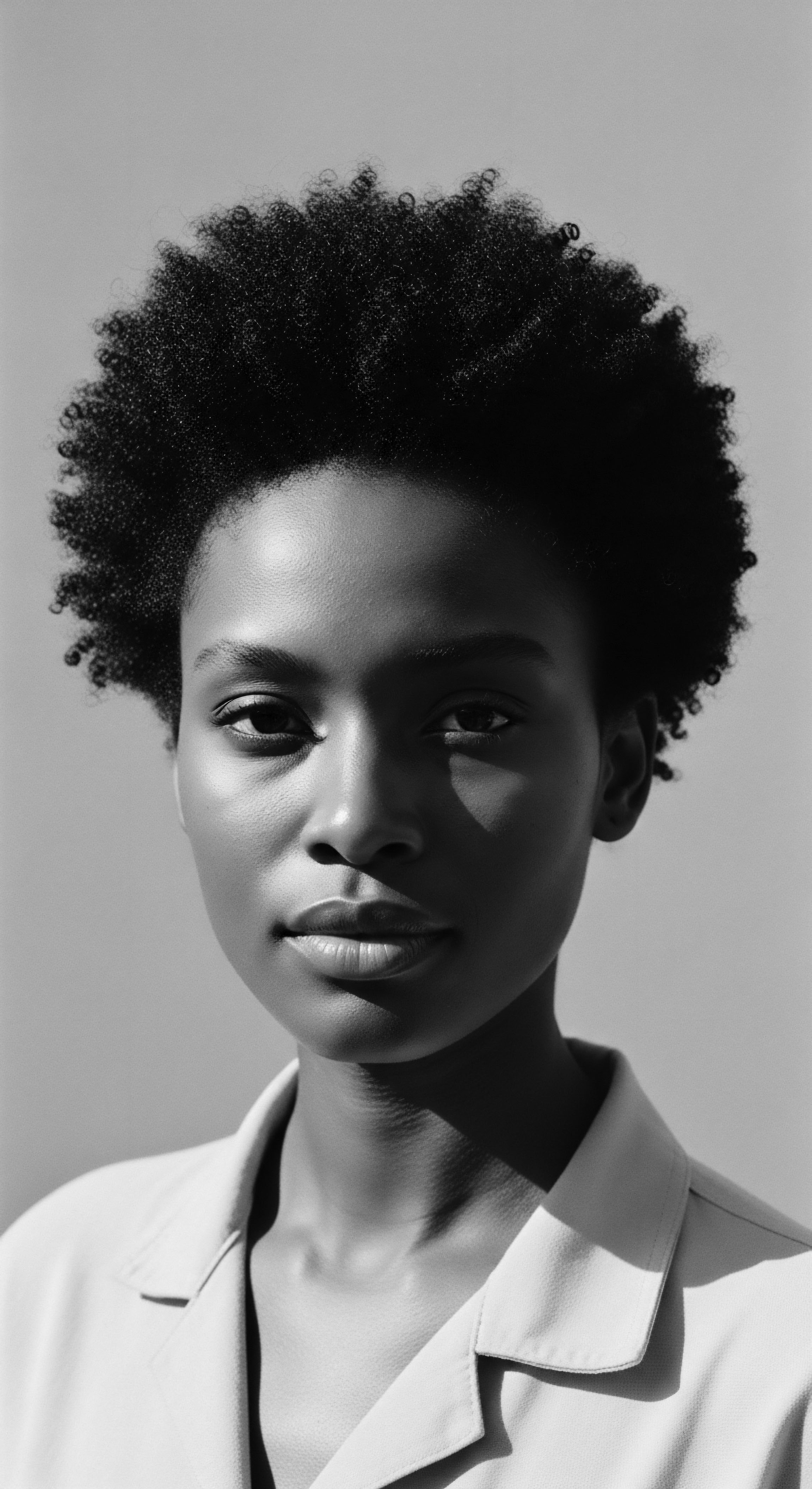
A Lexicon of Inherited Textures
Before standardized numerical systems, the classification of textured hair resided in the descriptive language of community and experience. People spoke of hair like a sheep’s wool, hair like a lion’s mane, hair like tightly coiled springs, or hair that flowed like a river. These descriptions, often steeped in regional metaphors and observations of nature, carried cultural weight and identity. The modern alphanumeric system, while useful for product formulation, sometimes strips away the poetic and ancestral understanding of hair.
Understanding the intricate structure of textured hair is the bedrock of appreciating its heritage, revealing how ancient wisdom often anticipated modern scientific discovery.
- Kinky Hair ❉ Often referring to tightly coiled strands, defying gravity with a spring-like resistance.
- Coily Hair ❉ Characterized by dense, spiral curls that form tight cylinders.
- Curly Hair ❉ Exhibiting distinct, often S-shaped or ringlet formations.
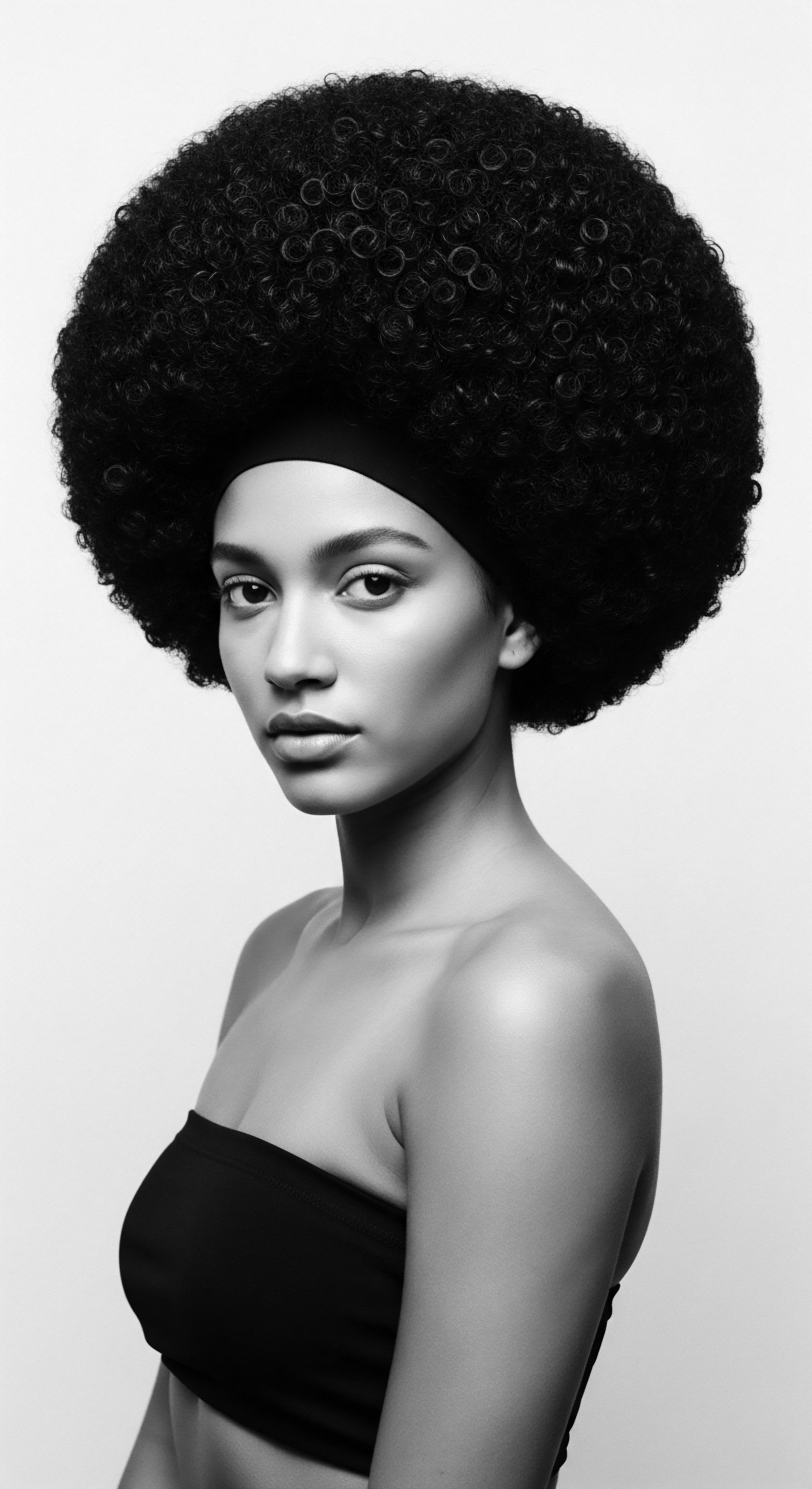
The Rhythms of Growth Through Time
Hair growth cycles, the ebb and flow of anagen, catagen, and telogen phases, are universal, yet their expression and the perception of hair length have been profoundly influenced by generational practices and environmental conditions. Ancestral diets, rich in nutrient-dense, locally sourced foods, played a significant part in the vitality of hair. Consider the traditional West African diet, often abundant in plant-based proteins, healthy fats from shea nuts or palm oil, and a variety of minerals from diverse vegetables.
These nutritional elements provided the foundational building blocks for robust hair growth, a connection that modern science now increasingly affirms. The practices of communal grooming, passed down through oral tradition, also minimized breakage and maximized length retention, effectively extending the anagen phase through care and protection.
The early understanding of hair as a living extension of the self, deeply connected to one’s lineage and environment, informed traditional care. It was not merely about aesthetic appeal, but about honoring the life force within each strand, a sentiment that resonates deeply with the enduring spirit of textured hair heritage.

Ritual
From the foundational understanding of the strand, we move to the living ceremonies of care and adornment, the cultural practices surrounding textured hair that have shaped identity and conveyed meaning across generations. These are the rituals, the tender threads of tradition, that have woven textured hair into the very fabric of Black and mixed-race communities, transcending mere style to become powerful statements of belonging, resilience, and profound heritage.

Echoes of Ancestral Styling Techniques
The practice of styling textured hair is an ancient art, its roots reaching back into the earliest human civilizations. Archaeological evidence from ancient African societies reveals intricate braiding patterns and elaborate headwear that signified social status, tribal affiliation, age, and even spiritual beliefs. These were not casual choices; they were intentional expressions, coded messages worn upon the head.
For example, cornrows, often called cane rows in some Caribbean contexts, trace their lineage back to at least 3000 BCE in Africa, with patterns indicating tribal identity, social standing, or even marital status (Genesis Career College). These techniques, passed down from elder to youth, often during communal grooming sessions, served as practical methods of care, preserving the hair from environmental rigors while simultaneously telling stories of lineage and place.
Styling textured hair is an art form rooted in ancient practices, each braid and twist a silent testament to a rich and enduring heritage.
The communal aspect of these styling sessions was a cornerstone of cultural continuity. Children would gather around elders, learning the rhythms of the comb, the precise tension of the braid, and the stories that accompanied each style. This transfer of knowledge was a deep expression of care, ensuring that the visual language of hair, its heritage, persisted.

Tools of the Ancestors and the Modern Age
The instruments used for hair care have evolved alongside the practices themselves, yet a thread of ingenuity connects the earliest implements to today’s innovations. Ancient combs, often carved from wood, bone, or ivory, were not just functional; they were often objects of art, imbued with spiritual significance and generational history. These hand-crafted tools, designed to navigate the unique coils and curls, laid the groundwork for modern detangling combs and brushes. The transition from natural fibers used for extensions in ancient Egypt to the sophisticated human and synthetic hair extensions of today represents a continuum of adornment and self-expression.
| Historical Implement Carved Wooden Combs |
| Traditional Use and Heritage Link Used for detangling and creating partings, often possessing symbolic carvings representing status or spirituality in ancient African communities. |
| Modern Parallel or Evolution Wide-tooth combs, detangling brushes, and fine-tooth combs for precise styling. |
| Historical Implement Natural Fibers for Extension |
| Traditional Use and Heritage Link Utilized plant fibers or even hair from relatives for added length, volume, and complex braided styles, signifying celebration or rites of passage. |
| Modern Parallel or Evolution Human hair and synthetic extensions, offering versatility and protective styling. |
| Historical Implement Heated Stones or Clay Rods |
| Traditional Use and Heritage Link Applied for straightening or curling, though less common than protective styles, sometimes used for ceremonial purposes. |
| Modern Parallel or Evolution Flat irons and curling wands, offering thermal styling with greater control and temperature regulation. |
| Historical Implement The tools used across generations for textured hair reflect an ongoing dialogue between practical needs, artistic expression, and enduring cultural heritage. |
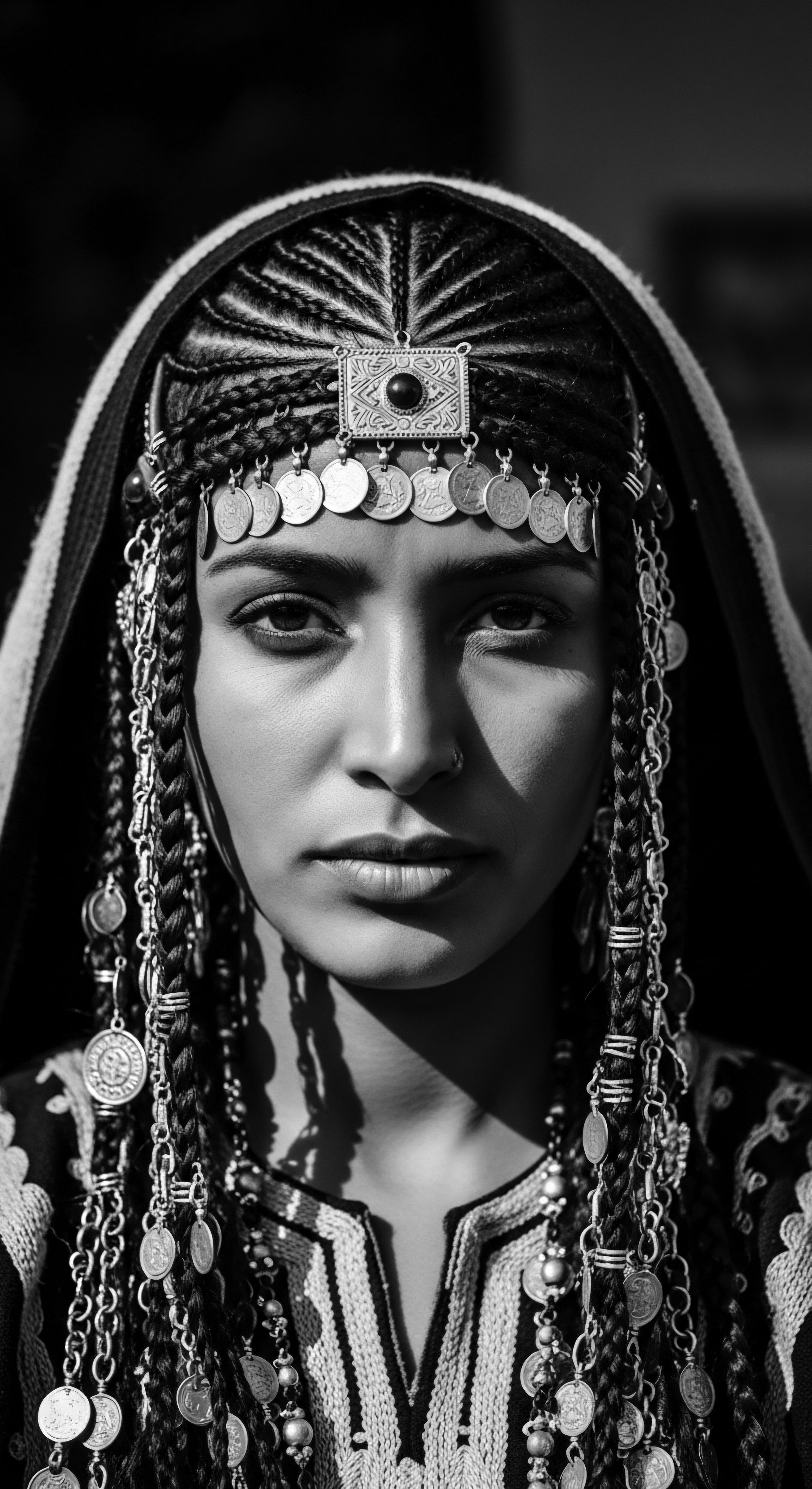
Protective Styles ❉ A Legacy of Preservation
Protective styles like braids, twists, and locs are cornerstones of textured hair heritage. These styles, practiced for millennia, served a dual purpose ❉ aesthetic expression and hair preservation. They protect the delicate strands from environmental damage, minimize tangling, and encourage length retention by reducing manipulation. During the transatlantic slave trade, these styles took on an additional, profound significance.
In some harrowing instances, cornrows were reportedly used by enslaved Africans to map escape routes from plantations, with rice seeds sometimes braided into the hair to sustain those on their perilous journey to freedom (University of Salford Students’ Union, 2024). This historical example underscores the deep resilience and ingenuity embedded within these styling practices, transforming them into symbols of survival and defiance. The ability to carry essential grains, hidden within the very fabric of one’s identity, speaks volumes to the resourcefulness born from oppression. This narrative illuminates how seemingly simple hair practices were deeply intertwined with matters of life, freedom, and the preservation of heritage in the face of brutal dehumanization.

The Enduring Art of Natural Definition
Beyond protective measures, the quest for defining natural texture has always been a significant part of textured hair practices. Traditional methods often involved water, natural oils, and the precise manipulation of hair to encourage its innate curl pattern. Techniques like Bantu knots, originating from Southern Africa, or various forms of twisting, have been used for centuries to create defined curls without heat. These methods represent a profound understanding of hair’s natural inclinations, a collaboration with its inherent structure rather than a struggle against it, a practice rooted deeply in the heritage of honoring one’s natural self.

Relay
From the foundational understanding of the strand and the historical rituals of adornment, we now explore how cultural practices surrounding textured hair continue to evolve, relaying ancestral wisdom forward while adapting to contemporary realities. This continuity represents a powerful assertion of identity and well-being, where holistic care and problem-solving draw directly from a profound heritage, allowing a deeper appreciation of the textured strand’s lineage.

Crafting Personalized Regimens ❉ A Dialogue with Ancestral Wisdom
The modern focus on personalized textured hair regimens is, in essence, a contemporary articulation of ancestral wisdom. Traditional communities understood that different hair textures and individual needs required tailored approaches. They learned through observation and intergenerational knowledge transfer which plants, clays, and oils best suited specific hair types and conditions.
Today, this translates into discerning ingredient lists and understanding the unique properties of various products, a practice that mirrors the thoughtful, empirical approach of our forebears. The current movement away from universal, one-size-fits-all solutions reflects a re-connection with this individualized care model, a respectful inquiry into what truly serves one’s hair and overall well-being, recognizing that hair health is deeply tied to cultural identity and personal heritage (Taylor & Francis Online, 2023).

The Nighttime Sanctuary ❉ Bonnet Wisdom and Its Historical Resonances
The practice of protecting textured hair at night, particularly through the use of bonnets and head coverings, is a direct inheritance from centuries of care. While the modern satin bonnet may seem like a contemporary accessory, its historical antecedents are found in the headwraps and turbans worn by African and diasporic women for practical, cultural, and spiritual reasons. These coverings shielded hair from dust, maintained moisture, and preserved intricate styles. During slavery, head coverings, such as the tignon laws enacted in New Orleans in 1786, were imposed to mark free women of color and diminish their perceived status by forcing them to cover their elaborate hairstyles (New York Historical, 2018).
However, these women defiantly subverted the laws, transforming plain kerchiefs into vibrant, ornate statements of beauty and resistance, adorning them with colorful fabrics, jewels, and feathers (New York Historical, 2018). This act of reclaiming the headwrap as a symbol of pride, rather than subjugation, exemplifies the enduring spirit of resilience and the powerful heritage woven into the simple act of covering one’s hair.
The protective bonnet, a modern necessity, carries the echoes of historical headwraps, a testament to enduring ancestral practices of preservation and self-expression.
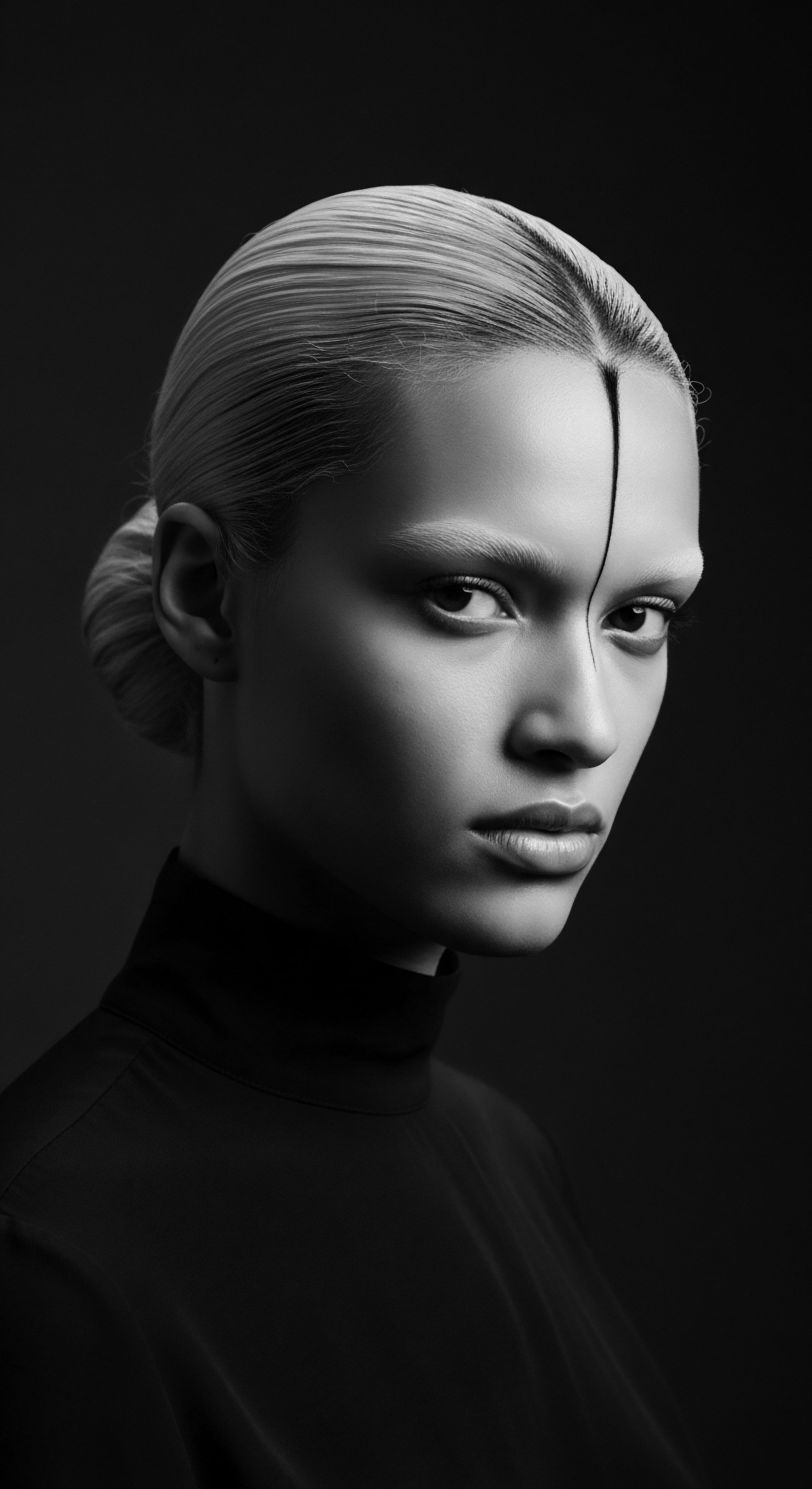
Ingredients from the Earth ❉ Traditional Knowledge, Modern Validation
The deep dives into ingredients for textured hair care today often validate what ancestral communities knew intuitively. Many of the natural ingredients gaining global recognition in modern formulations have been staples in African hair care for centuries.
For example, Shea Butter, sourced from the Karite tree in West Africa, has been used since at least the time of Queen Cleopatra for its deeply moisturizing and protective properties for both skin and hair (Obscure Histories, 2024). This nutrient-rich butter, packed with vitamins A, E, and F, offers UV protection and conditioning benefits, making it an ideal sealant for textured hair, prone to dryness. Similarly, Rhassoul Clay from the Atlas Mountains of Morocco has been a traditional cleanser and detoxifier, valued for its mineral content and gentle cleansing abilities (Obscure Histories, 2024). These practices, passed down through generations, are now supported by scientific understanding of the biomolecular properties of these natural elements.
Consider the tradition of using Chebe Powder by the women of the Basara tribe in Chad for hair length retention. This practice, involving a blend of seeds and resins, focuses on strengthening the hair shaft and minimizing breakage, allowing hair to retain its length over time (Africa Imports, 2025). This ancestral method highlights a sophisticated understanding of hair structure and protective care, long before chemical analyses could pinpoint specific compounds. The enduring efficacy of such time-honored ingredients underscores a continuity of wisdom, proving that the most profound insights often originate from a deep connection to the earth and a respect for inherited knowledge.
- Shea Butter ❉ A West African staple, provides intense moisture and a protective barrier, traditionally used for centuries to nourish and seal textured strands.
- Rhassoul Clay ❉ From Moroccan mountains, a mineral-rich cleanser and detoxifier, revered for its purifying and softening properties in traditional hair rituals.
- Chebe Powder ❉ An ancestral Chadian blend, applied to hair for length retention, demonstrating a deep understanding of strengthening the hair shaft and preventing breakage.

Problem Solving ❉ Bridging Ancient Remedies and Contemporary Science
Addressing common textured hair challenges, such as dryness, breakage, or scalp irritation, has always been a component of cultural hair practices. Ancestral remedies often relied on readily available botanicals, each selected for its specific therapeutic properties. The use of certain herbs for scalp health or specific oils to combat dryness speaks to a rich empirical knowledge base. Modern hair science, with its advanced understanding of molecular biology and dermatology, often finds itself validating these age-old solutions.
For instance, the anti-inflammatory properties of certain plant extracts used historically for scalp conditions are now being studied for their efficacy against modern dermatological concerns. This convergence of traditional and scientific approaches shows a profound respect for the heritage of healing and care, allowing textured hair to flourish in a holistic way.
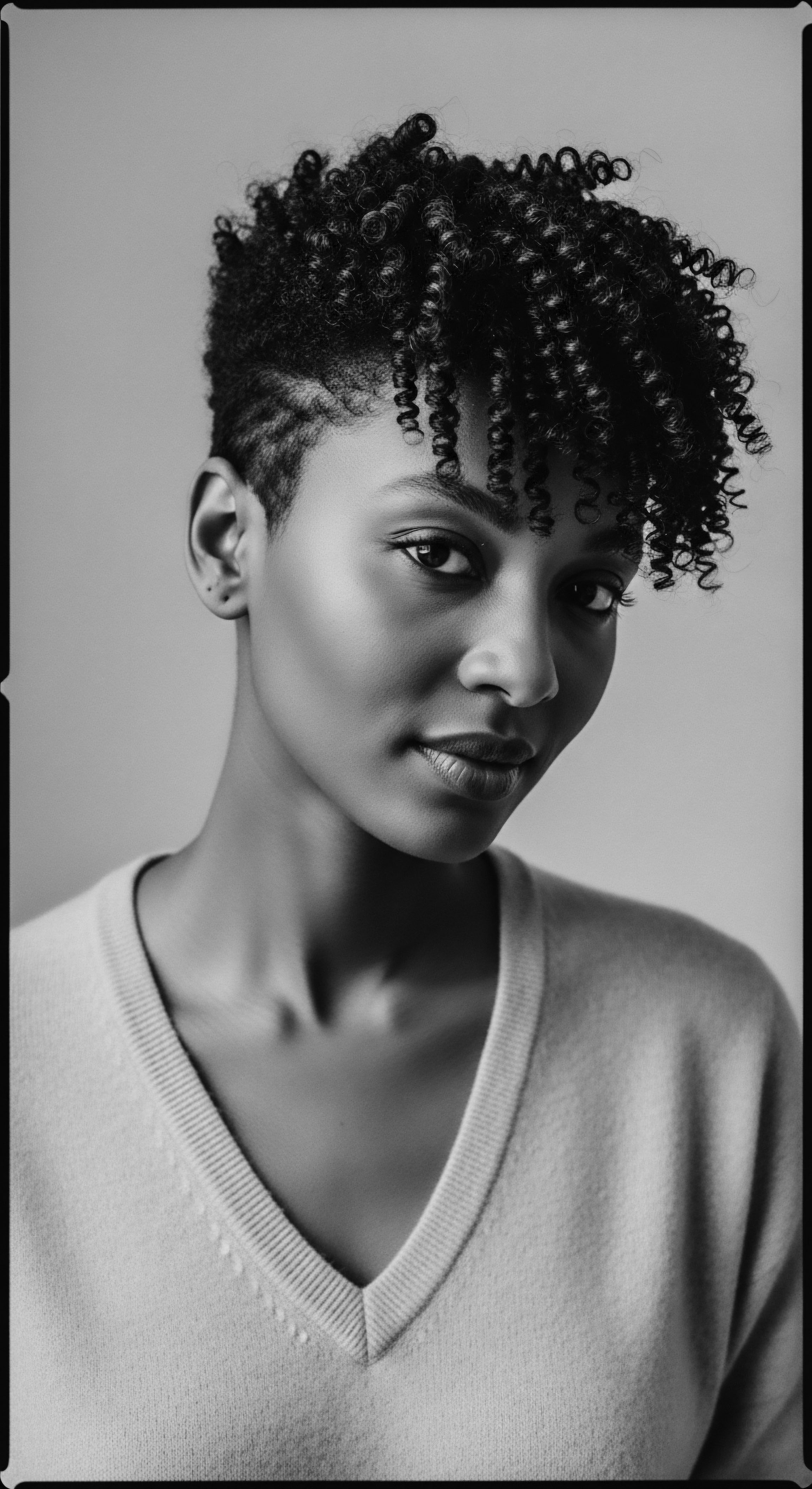
Holistic Influences ❉ Hair as a Mirror of Wellness
Ancestral wellness philosophies often viewed hair not in isolation, but as an integral part of the overall human system—a mirror reflecting internal health and spiritual balance. This holistic perspective considered diet, mental peace, and communal well-being as foundational to vibrant hair. A belief persisted that a healthy scalp and hair were signs of a healthy body and spirit.
This contrasts with a more segmented, problem-solution approach prevalent in some modern contexts. The contemporary resurgence of holistic hair care, emphasizing nutrition, stress reduction, and mindful practices, represents a return to these ancestral roots, acknowledging that the radiance of textured hair is not merely superficial; it is a manifestation of inner harmony and a powerful connection to one’s heritage.

Relay
Having explored the foundational biology of textured hair and the enduring rituals that have shaped its care, we now delve into the nuanced interplay of scientific understanding, cultural meaning, and the profound heritage that continues to redefine textured hair’s place in the world. This advanced exploration considers how contemporary scientific discovery often illuminates the ingenuity of ancestral practices and how the ongoing evolution of cultural norms speaks to a deeper, more resilient understanding of self, continually reflecting its connection to a rich ancestral past.
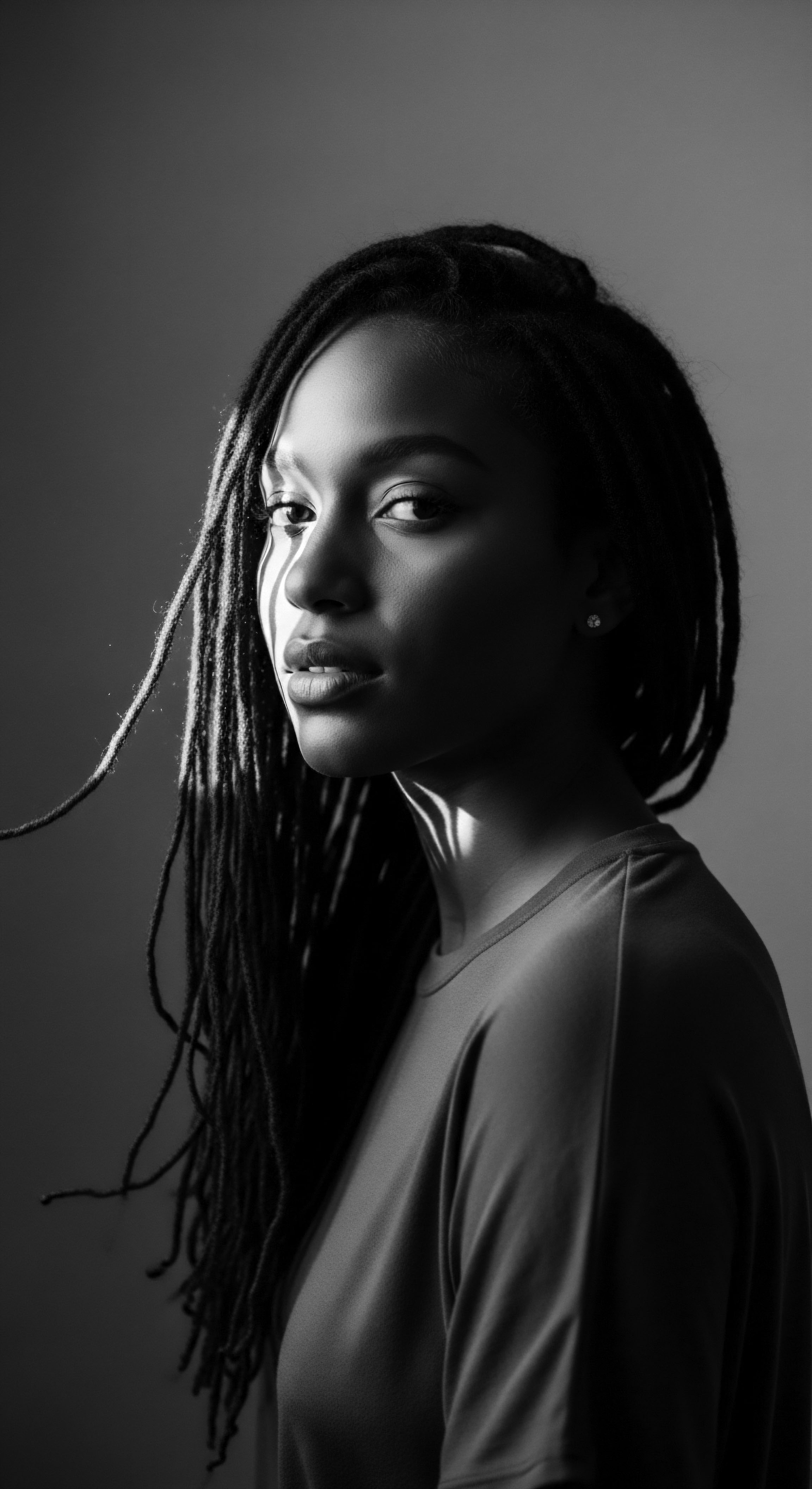
The Intertwined Helix ❉ Genetics, Culture, and Identity
The helical structure of textured hair, dictated by genetics, has long been a marker of identity. The variations in curl pattern, strand thickness, and density are not merely biological traits; they are visual representations of a vast and diverse human heritage. For generations, these attributes carried deep cultural significance, indicating lineage, marital status, and even spiritual roles in various African societies.
The systematic dehumanization during the transatlantic slave trade included deliberate attempts to erase these visual markers of identity, leading to the forced shaving of heads and the imposition of Eurocentric beauty standards (JSTOR Daily, 2019). The subsequent centuries saw a complex negotiation with these imposed ideals, where chemical straighteners became prevalent.
However, the 20th and 21st centuries have witnessed a profound re-claiming of natural texture, often referred to as the Natural Hair Movement. This movement, particularly among Black and mixed-race communities, represents a powerful act of self-determination and cultural restoration. It is a collective recognition that hair, in its natural state, is a vibrant expression of heritage and an assertion of self-love, challenging entrenched beauty standards that historically marginalized textured hair. The journey from perceived inferiority to celebrated crown highlights a generational shift in cultural consciousness, affirming the inherent beauty and strength of naturally occurring curl patterns.

Decoding Ancient Formulations ❉ Science Validating Heritage
Many traditional hair care formulations, developed through centuries of trial and error within ancestral communities, contain ingredients whose benefits are now being scientifically validated. Consider the widespread historical use of natural oils such as Castor Oil in African and Caribbean communities, often applied to the scalp to promote growth and strengthen strands. Modern research points to ricinoleic acid, a component of castor oil, as a potential negative growth factor inhibitor (MDPI, 2024). While the scientific mechanism was unknown to early practitioners, their empirical observations led to effective practices.
This convergence of ancestral knowledge and modern scientific understanding underscores a crucial point ❉ traditional practices were not simply superstitious; they were often highly effective, derived from an intimate, lived understanding of natural materials and their interaction with the human body. The ongoing scientific study of botanical compounds used in ancient hair care, from the anti-inflammatory properties of certain plant extracts to the moisturizing effects of natural butters, is continuously providing validation for the ingenuity of inherited wisdom. It is a testament to the enduring power of observation and careful practice, passed down through the generations, that now gains new layers of understanding through scientific inquiry.
| Traditional Ingredient Shea Butter (Karite) |
| Ancestral Application and Heritage Used in West Africa for millennia as a sealant, moisturizer, and protector against harsh climates; a sacred and generational resource. |
| Modern Scientific Insight Rich in fatty acids (oleic, stearic) and vitamins A, E, F, providing deep conditioning, UV protection, and barrier repair. |
| Traditional Ingredient Castor Oil |
| Ancestral Application and Heritage Popular in African and Caribbean hair care for centuries to promote thicker hair and improve scalp health, often massaged into the roots. |
| Modern Scientific Insight Contains ricinoleic acid, which may have anti-inflammatory properties and contribute to hair follicle health, potentially influencing growth factors. |
| Traditional Ingredient Aloe Vera |
| Ancestral Application and Heritage Applied in various African and Indigenous cultures for soothing scalp irritation, moisturizing, and promoting hair softness. |
| Modern Scientific Insight Composed of enzymes, amino acids, and vitamins that provide anti-inflammatory, moisturizing, and conditioning benefits for hair and scalp. |
| Traditional Ingredient Many time-honored ingredients used in textured hair care are now revealing their scientific basis, illuminating the deep intuitive wisdom of ancestral practices. |

Cultural Legislation and the Unbound Helix
The evolution of cultural practices surrounding textured hair has not been without significant struggle, particularly in contexts where Eurocentric beauty standards were enforced. Legal and societal pressures often mandated the alteration or concealment of natural hair. The C.R.O.W.N. Act (Creating a Respectful and Open World for Natural Hair), first introduced in California in 2019 and since adopted by various US states and municipalities, represents a significant legal and cultural milestone in this ongoing journey (Refinery29, 2021).
This legislation prohibits discrimination based on hair texture and protective styles, directly addressing a legacy of racial discrimination in schools and workplaces. The passage of such laws speaks to a powerful collective effort to validate and protect the heritage of textured hair, recognizing it as an intrinsic part of racial and cultural identity.
This legislative shift reflects a broader societal acknowledgment of the systemic biases that have impacted textured hair communities. It stands as a testament to the perseverance of individuals and communities who have championed the right to wear their hair in its natural state, freely and without penalty. The C.R.O.W.N.
Act, in a sense, codifies the values of respect and acceptance that have long been at the heart of the natural hair movement, allowing the unbound helix of textured hair to truly flourish, free from historical constraint. The struggle for recognition and celebration of textured hair is an ongoing narrative, a continuous relay of ancestral defiance and modern affirmation.

Diasporic Voices ❉ A Global Chorus of Hair Heritage
The experiences of textured hair communities across the diaspora contribute to a multifaceted understanding of its evolution. From the intricate adornments of the Himba tribe in Namibia, where hair signifies age or marital status (Genesis Career College, 2024), to the nuanced discussions of hair discrimination faced by Black women in the UK, shaping their personal and social identity (Taylor & Francis Online, 2023), the story of textured hair is a global one. Online platforms and social media have provided unprecedented spaces for sharing knowledge, techniques, and personal journeys, fostering a global community united by shared experiences and a collective celebration of textured hair heritage.
This digital gathering of voices amplifies ancestral wisdom, allowing for a dynamic exchange of care practices and a powerful affirmation of beauty in its most authentic forms. The collective memory of shared struggles and triumphs empowers individuals to embrace their natural selves, solidifying a worldwide movement that honors the profound legacy of textured hair.

Reflection
The journey through generations of textured hair practices is more than a historical account; it is a profound meditation on resilience, cultural continuity, and the enduring power of identity. Each coil, each kink, each strand carries within it the memory of hands that nurtured, spirits that persevered, and communities that celebrated. We have traversed from the elemental understanding of the hair’s very structure, through the sacred rituals of care and adornment, to the contemporary re-claiming of natural texture, propelled by scientific validation and cultural affirmation. The ‘Soul of a Strand’ whispers through every story, reminding us that hair is not inert; it is a living archive, breathing with the wisdom of the past and constantly shaping the narratives of the future.
This enduring heritage, often forged in defiance, stands as a luminous beacon. It calls upon us to recognize the beauty in authenticity, the strength in tradition, and the profound connection we share with our ancestral roots. The evolution of textured hair practices is a testament to an unwavering spirit, a vibrant, unfolding legacy that continues to inspire and empower. It is a story still being written, one magnificent curl at a time.
References
- Byrd, Ayana, and Lori L. Tharps. Hair Story ❉ Untangling the Roots of Black Hair in America. St. Martin’s Press, 2002.
- Caldwell, Paulette M. “A Hair Piece ❉ Perspectives on the Intersection of Race and Gender.” Duke Law Journal, vol. 1991, no. 2, 1991, pp. 365-397.
- Essel, S. K. “Hair Styling as a Cultural Practice and Identity in Ghanaian Society.” Journal of Pan African Studies, vol. 16, no. 4, 2023.
- Gould, Virginia M. “The Free Women of Color of New Orleans ❉ Race, Status, Gender, and the Law, 1782-1800.” The Devil’s Lane ❉ Sex and Race in the Early South, edited by Catherine Clinton and Michele Gillespie, Oxford University Press, 1997, pp. 200-213.
- Jones, L. “Africans and the Evolution of Black Hair in America.” The Journal of Black Studies, 2020.
- Sherrow, Victoria. Encyclopedia of Hair ❉ A Cultural History. Greenwood Publishing Group, 2006.
- Sieber, Roy, and Frank Herreman, editors. Hair in African Art and Culture. Museum for African Art, 2000.
